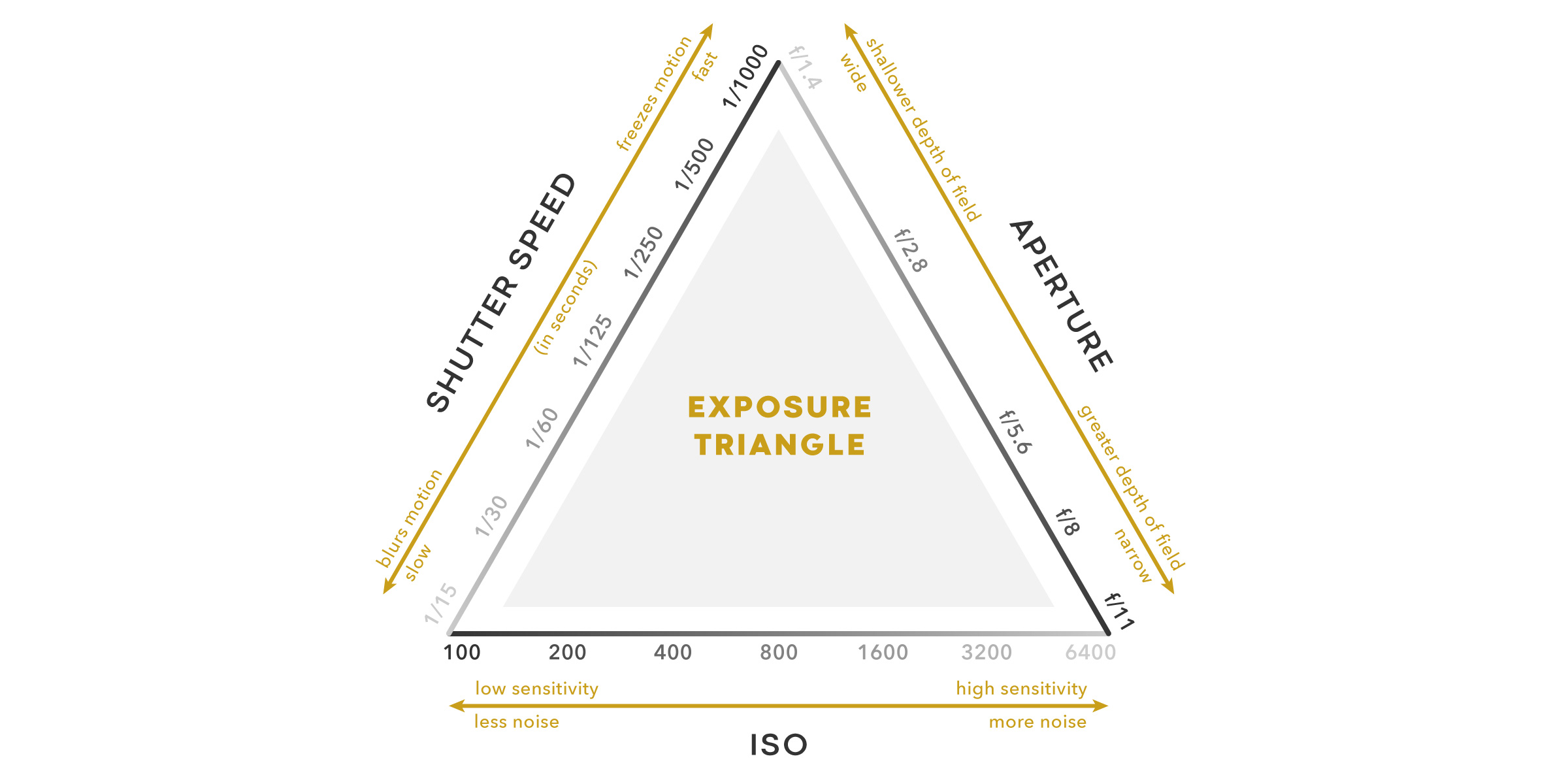The photograph is light. Every time you press the shutter, a series of actions occur on your camera, giving an image, none of this would be possible if there was no light.
Today I am going to talk to you about the triangle of light. This is a very important concept and if you want to take the manual and semi-manual modes and operate them with ease, you will need to understand the 3 components of this triangle. I would say that these are the factors that most influence how the final photo will be.
- The three elements that make up the famous triangle of light are ISO.
- Aperture and shutter speed.
- Most readers of this blog know what each of these factors are.
- But in case you fall behind I will explain them very briefly:.
The mixture, to a greater or lesser degree, of these 3 factors is what gives us the final photo and the most important thing is that each change in one of these 3 factors will affect the other 2, which means that in manual mode, No you can change a factor of those 3 without taking into account the other 2. , the camera already does it for us in automatic mode and even in semi-manual mode, but in manual mode we control everything.
Let’s see, capturing a photo is capturing the right amount of light from what we want to photograph, do we agree on that?Well, now I want you to imagine in a room with a locked window. There is no other light source than this initially closed window. Plus, and to make it more fun, imagine you’re wearing sunglasses. Are you following me? If we wanted to light this room, we would open that window, but if we wanted the room to be much brighter, we could enlarge that window, right?is it like in the photograph? This is called openness.
Now imagine that we do not want or cannot enlarge the window, but we still want the light to enter. Well, we would start by opening the window, but the more we leave it open, the more light will enter (with the little difference that in the room the light is lost, it does not accumulate, but in the camera the light accumulates and guard accumulates). Well, that’s the closest thing to shutter speed. If a shutter speed of 2 seconds is chosen on an SLR camera in “M” mode, twice as much light will enter as if the speed were only 1 second. Remember that you have been wearing sunglasses since we started with the example. These sunglasses symbolize the ISO value, which if we have it low in a camera, only enough light will enter. What if, with the window open, you took off your sunglasses?Your eyes would just light up more. The same is true when we upload the ISO to high values (with the small difference that in SLR cameras the ISO sometimes has a bit of noise and grain in the photo).
By mastering each of these 3 factors separately, you will learn how to control them as a whole. If you want a little tip, I always recommend those who take their first steps in manual mode: use the semi-manual modes of your camera and learn The camera is smart, in the opening priority mode (mode A in Nikon, “Av” in Canon) what you can control is the aperture size. Try changing this value and see how the camera automatically changes the other factor, the shutter speed. If you put a small aperture, f/16 for example, the camera will choose a fairly slow shutter speed, if you choose a large aperture, such as f/2. 8, you will see that the shutter speed will be faster, and you can also test with the shooting priority mode (“S” in Nikon and “TV” in Canon), but conversely.
It should be noted that each of the 3 factors described above has side effects (sometimes that is what we are looking for) Aperture has a direct impact on depth of field, isO influences the amount of grain / noise that will appear on the photo and shooting speed influence how we capture action or movement).
And so far with today’s theme, did you learn anything?I hope so. From there, you should be able to challenge the light in your photos and tame it to get the image you want. If there’s anything to clarify, ask me and I’d be happy to explain.

